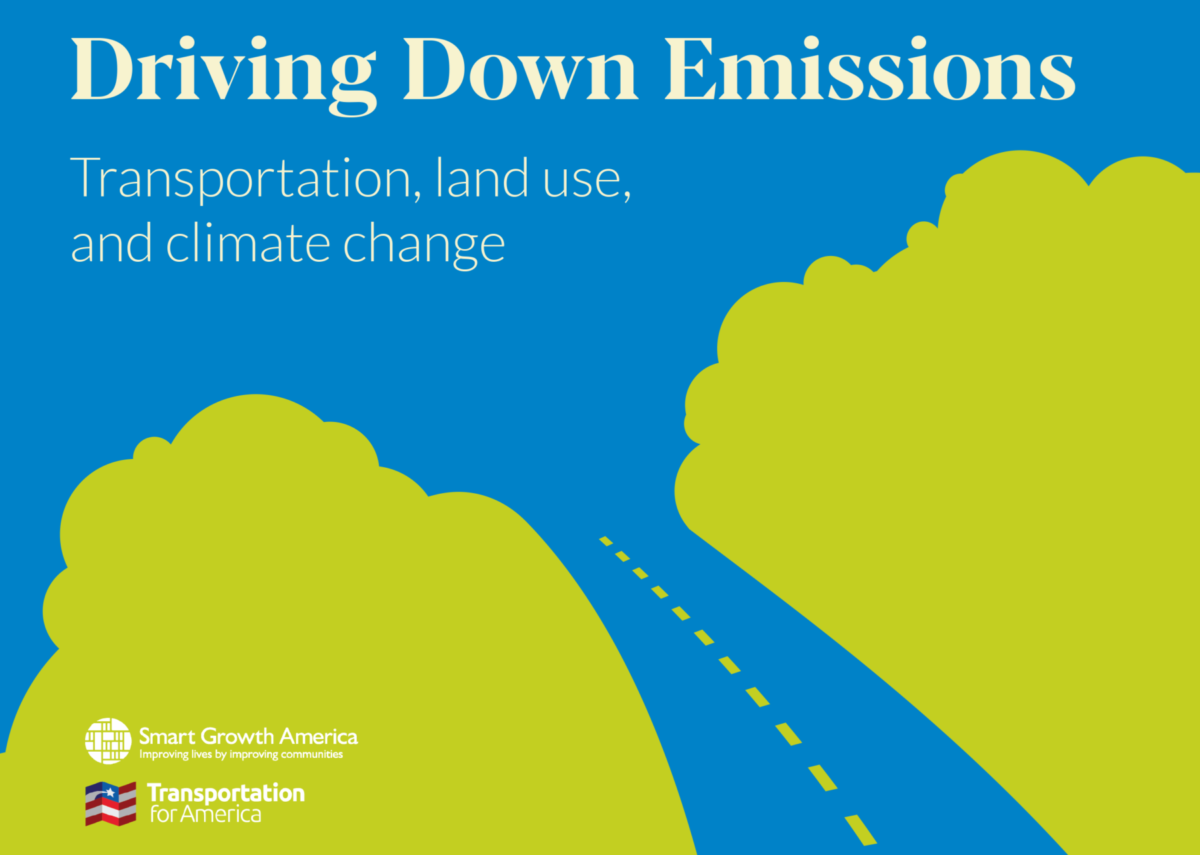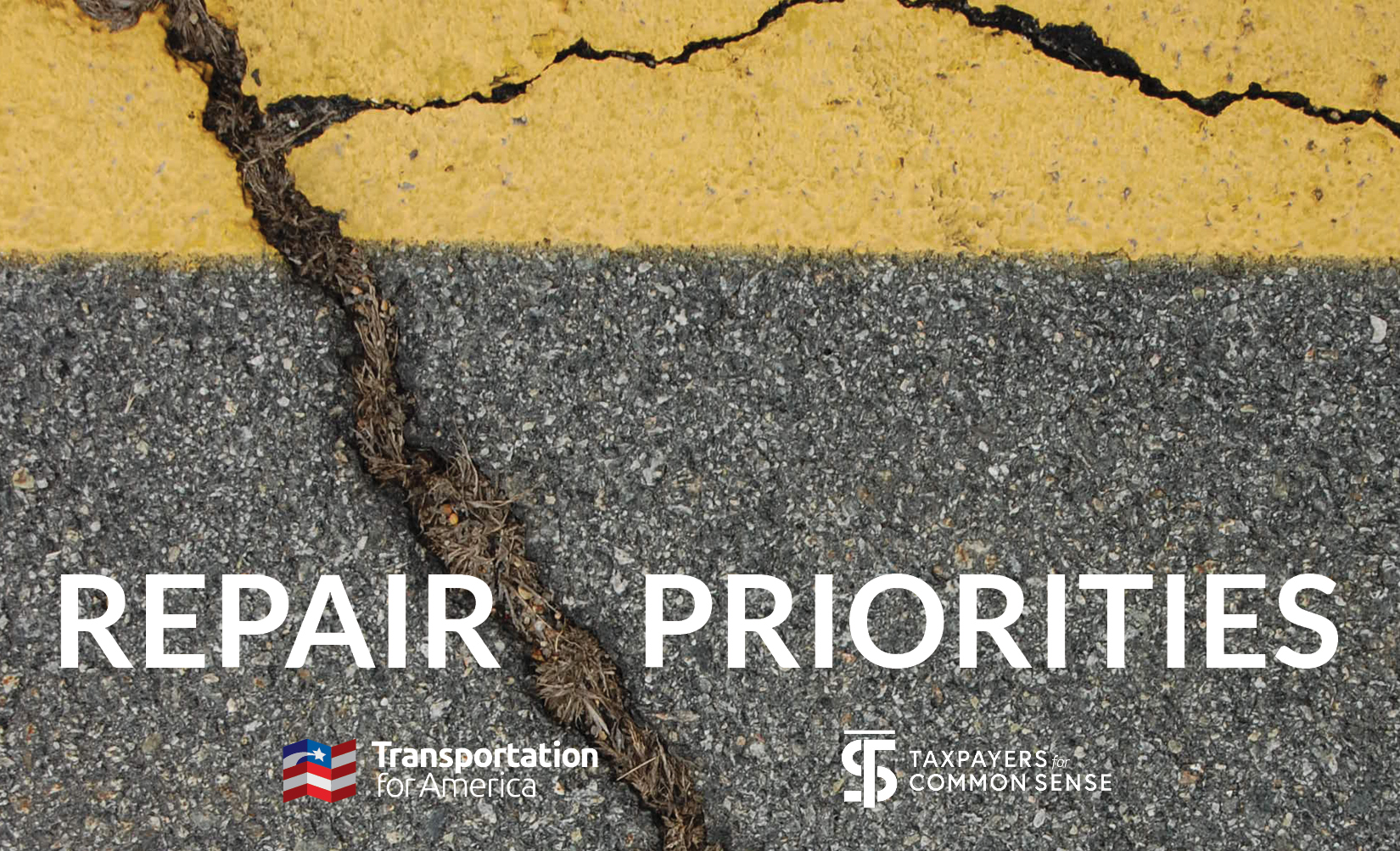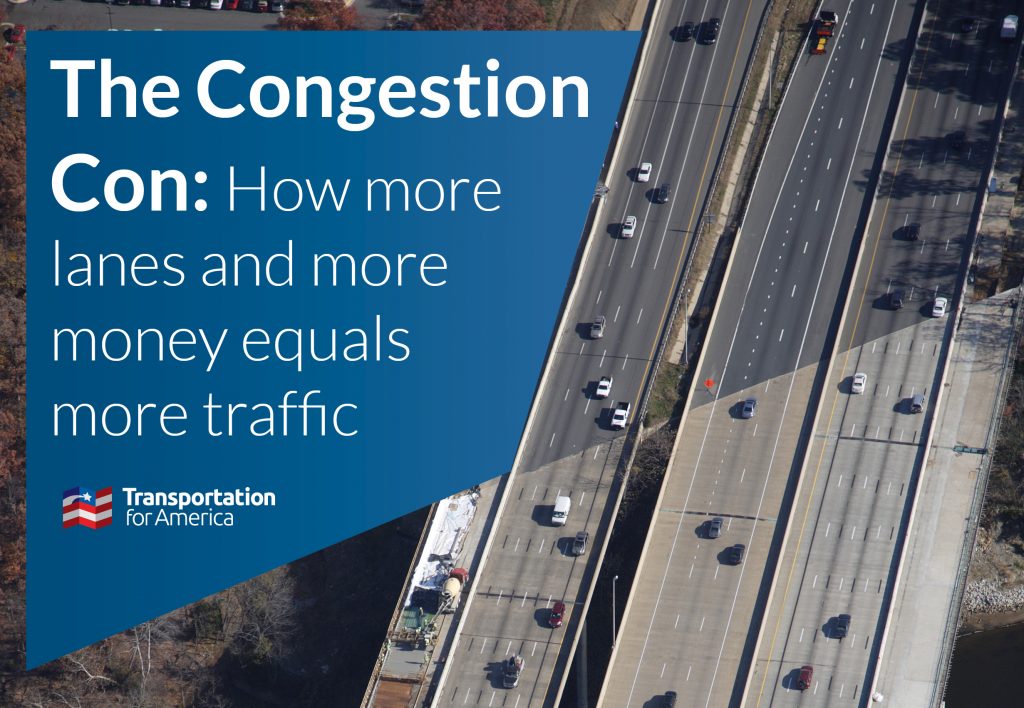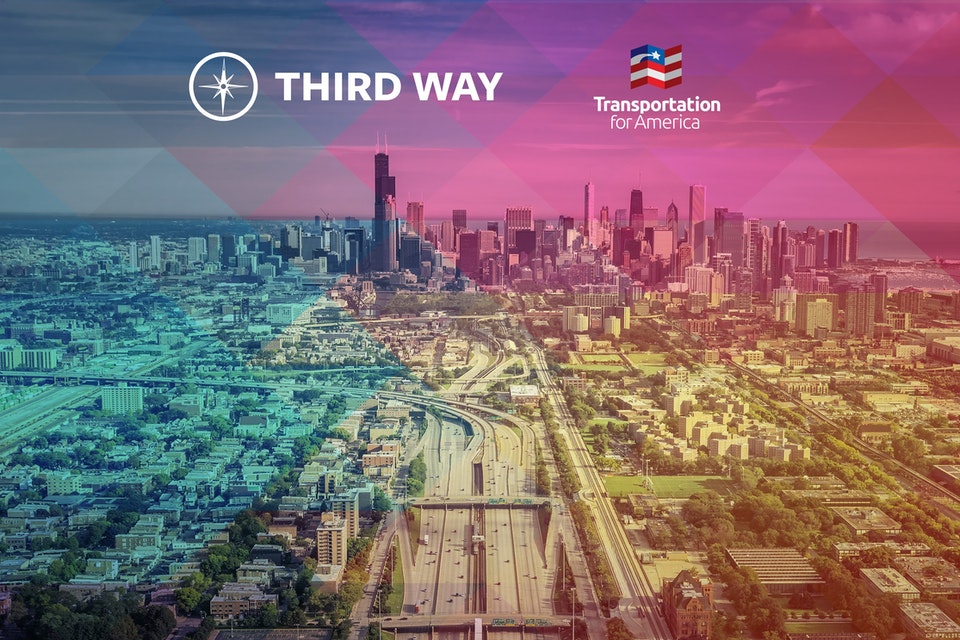Senate Democrats recommend less driving—as Senate committee approves billions for new roads
The Senate Democrats’ Special Committee on the Climate Crisis recently released a report recommending key federal actions in each sector to avert the impacts of climate change, incorporating a number of Transportation for America’s recommendations. In fact, the very first recommendation for the transportation sector is to enable Americans to choose walking, biking, or public transportation over driving.

A MUNI light rail train in San Francisco. Photo by Jim Maurer on Flickr’s Creative Commons.
We will never be able to reduce transportation emissions in time to avert catastrophic climate change without also reducing how much people must drive to accomplish daily activities. Federal transportation policy has a huge role to play in that.
Our partners at Third Way recently joined us to discuss why the Senate Environment and Public Works (EPW) Committee’s transportation reauthorization bill from last summer fell far short of the broad changes needed to address climate change (particularly in contrast to the House’s more recent INVEST Act). While the Senate included a section on climate, their overall approach would actually make climate change worse by preserving the status quo approach that leads to more roads, more driving, and more emissions.
Fortunately some Senators have recently taken a broader view. In late August, the Senate Democrats’ Special Committee on the Climate Crisis released a climate action report that proposes the kind of paradigm shift that’s needed. The report doesn’t merely go beyond electric vehicles—it leads its transportation section with recommendations on the importance of reducing how much people need to drive by building walkable, transit-served communities where people can live and work in the same area.
Here are three things we were encouraged to see in this plan.
Recognizes the role of land use and sprawl in increasing emissions
It is noteworthy that the transportation section of the Senate’s report begins with a discussion about how land use decisions exacerbate transportation emissions by driving sprawl. That focus is often entirely missing from climate advocates’ and policymakers’ conversations.
As the report notes, through 20th century zoning, most communities have made it illegal to build affordable, multi-family housing near job centers, retail or public transit by restricting those areas only for detached single-family homes. This practice produces spread out car-oriented development and raises the cost to live in desirable areas where walkability and viable alternatives to driving exist. It forces low- and moderate-income commuters to make long drives from suburbs and exurbs, increasing emissions and exacerbating congestion in the process. Simply allowing greater housing density, especially near job and retail centers, can have a profound impact on emissions by reducing how much people need to drive every day.
But this isn’t just a local issue. Federal policy plays an enormous role in local land-use decisions, largely due to the incentives that federal programs—like transportation and housing—often create. The Senate report recommends that the federal government provide significant new funding and financing to promote smart growth, safer streets, and public transportation options. Done right, those strategies can be a potent tool to reduce emissions, while addressing critical issues of equity and housing affordability in the process.
Emphasizes high-quality transit and roadway safety
Providing frequent, reliable transit service will be a crucial step in reducing how much Americans need to drive, yet as the Senate’s report notes, the current approach fails to help make that a reality. The federal government has chronically underfunded transit, particularly transit operations, resulting in a major backlog of repairs and reliability issues caused by decades of neglect that have undercut transit ridership. Federal support for transit is more important than ever, as agencies are spending more to clean transit vehicles, provide personal protective equipment to keep their employees safe, and continue to provide access to work, healthcare, and other necessities for the millions of Americans who rely on transit.
The Senate’s report also explicitly calls out the need to improve safety for pedestrians, especially pedestrians of color. It echoes Transportation for America’s principles, noting that many U.S. roads are designed to move vehicles at the highest speeds possible, with little consideration for walking, biking, or transit. It calls to stop treating pedestrians as an afterthought and explicitly encourage other transportation options for trips under three miles. It recommends adoption of a Complete Streets approach.
Many of the same strategies apply in rural areas
The report also notes that while rural areas have their own challenges, many of the same land-use strategies will still be crucial in those communities. Promoting mixed-use development in existing historic rural downtowns and main streets over office parks and regional malls can have a profound impact on how much people drive, and emit. It can also help leverage rural communities’ unique character, historically significant architecture, and valuable public spaces to promote economic vitality and reduce the risk that these local assets are forsaken in favor of new development on the fringes of the community that is far more expensive to maintain while generating less tax revenue.
The Senate’s report is a good step but more education is needed
It is heartening to see this emphasis in the Senate’s climate report, but it isn’t enough. Reports like this are only meaningful if they actually impact federal transportation policy.
Too many congressional leaders still aren’t seeing the importance of investing in a transportation system that allows people to drive less by making shorter trips, biking, walking, and riding transit possible. While we often hear support in theory, few realize that this means both supporting those types of projects while also opposing projects that add new dangers in the name of letting drivers drive faster. It also means supporting fundamental reform in the federal transportation program that makes walking, biking, and riding transit a priority through funding and policy, at the expense of more money for the status quo road-building approach. Even the Senate’s report arguably downplays the significant role that federal—not just local—policy has played in incentivizing sprawl and increasing how much Americans need to drive, as well as the crucial role federal policy will need to play in making change happen.
We are encouraging advocates to help educate their members of Congress about the real connection between climate and transportation. You can help by: (1) Sending a letter to your members of Congress explaining why the Senate EPW Committee’s long-term transportation bill is actually bad for the climate. We have a draft letter you can use, which you can find here. (2) Tweeting at your members of Congress (particularly your Senators) to urge them to pass a climate-friendly transportation bill. You can use our social media toolkit. (3) Submitting a short letter to the editor to your local newspaper explaining what it takes to truly reduce transportation emissions: investment in a transportation system that makes shorter trips, biking, walking, and riding transit possible.



















1 Comment